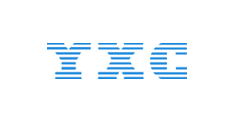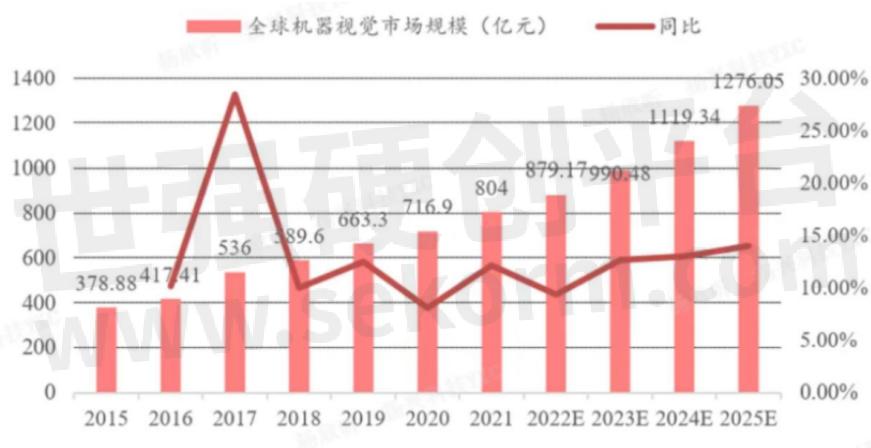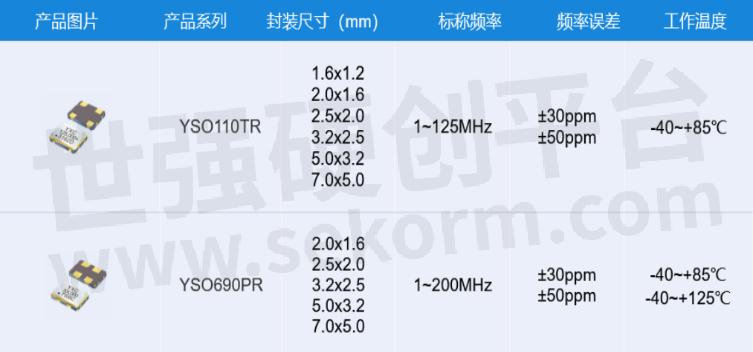YXC Crystal Oscillator Solutions Help Industrial Camera Applications

Industrial cameras are professional camera devices used in the field of industrial automation and machine vision. They can efficiently and accurately obtain images of target objects and cooperate with automation equipment to perform image processing and analysis. With the development of Industry 4.0 and intelligent manufacturing, the demand and market for industrial cameras are growing rapidly, especially in the fields of quality inspection, production line monitoring, automation control and machine vision.
1. Market Application and Trends
The main application areas of industrial cameras cover manufacturing, electronics, pharmaceutical, automobile manufacturing, logistics, etc. With the improvement of the automation level of various industries, it is showing a rapid growth trend.
According to market research, the industrial camera market has maintained rapid growth in recent years, especially in the Asia-Pacific region, where market demand is particularly strong. It is expected that by 2025, the global industrial camera market will reach billions of dollars. This growth is due to the following major trends:

2016-2025 Global Machine Vision Market Trend Chart
1. The promotion of intelligent manufacturing and Industry 4.0: The core of Industry 4.0 is intelligent manufacturing and automation, and machine vision, as a key technology, has greatly promoted the demand for industrial cameras.
2. Integration of artificial intelligence and big data: With the development of artificial intelligence and big data technology, industrial cameras are no longer limited to simple image acquisition, but are combined with deep learning, edge computing and other technologies to achieve real-time analysis and decision-making of complex image data.
3. High resolution and high speed: With the continuous improvement of the industry's requirements for precision and efficiency, the technical development of industrial cameras is also constantly upgrading. Cameras with high resolution (such as 8K and above) and high-speed imaging will become the mainstream in the future.
4. Diversified interfaces and communication protocols: With the popularization of industrial Internet of Things, industrial cameras that support multiple communication protocols (such as EtherCAT, Profinet, etc.) can be better integrated into the automation system, enhancing the fluidity of data and the synergy of the system.
In these application scenarios, industrial cameras require clock devices to have high precision and accuracy.
2. Application and Requirements of crystal oscillators in Industrial Cameras
In various modules of industrial cameras, crystal oscillators (crystal oscillators) play the role of providing precise clock signals, mainly to ensure that various parts of the system can operate synchronously and ensure the stability and correct processing of signals. Different modules have different requirements for parameters such as the frequency, accuracy, and temperature stability of crystal oscillators.

Schematic diagram of industrial camera operation process
3. YXC Crystal Oscillator Solution Helps Industrial Camera Application
Common frequency points of industrial cameras: 32.768KHz, 24MHZ, 25MHZ, 27MHZ, 40MHZ, 100MHZ, 125MHZ, 156.25MHZ
Based on the requirements of industrial cameras for clock devices, the following YXC crystal oscillator solutions are recommended:
· 32.768KHz resonator

Currently, the mainstream industrial camera solution uses a 32.768KHz resonator with a package size of 3.2*1.5
· MHz resonator

In industrial camera applications, MHz resonators mainly use 3225/2520 sizes, and some sensor applications have crystal oscillator miniaturization (2016) requirements

Industrial camera applications require oscillators with high precision and high stability. Some module designs may require the application of oscillators with special frequencies, which can be met through pre-programmed oscillators.

10GbE industrial cameras usually use higher frequencies such as 156.25MHz and have higher jitter requirements.
(YSO230LR jitter ≤ 0.1pS, which can meet the jitter requirements of oscillators for conventional industrial camera solutions)
- +1 Like
- Add to Favorites
Recommend
- YXC Programmable Differential Oscillator, Frequency 50MHz, 7050 package, LVDS output, applied to SVG
- YXC Programmable Crystal Oscillator, Frequency 27MHz, Package 2016, Frequency Difference ±50ppm, Used in Mobile Phone Screen
- YXC Programmable Spread Spectrum Crystal Oscillator, Frequency 50MHz Effectively Reduces Emi, Applied to Domestic Servers
- YXC Programmable Differential Crystal Oscillator, Frequency 148.5MHz, LVDS Output, 5032 Package, Used in High-end Cameras
- Yxc Quartz Active Differential Crystal Oscillator, Frequency 156.25MHz, Output Mode HCSL, Used in High-performance Servers
- YXC Yangxing Quartz Crystal Oscillator, Frequency 20MHZ, 3225 Package, Used in Servo Motor
- YXC Passive Automotive Grade Resonator, 50MHz, Package Size 2016, Total Frequency Difference ±80PPM, Suitable for Automotive Encoders
- There are Two Main Types of Crystal Oscillators: Active Crystal Oscillators and Passive Crystal Oscillators
This document is provided by Sekorm Platform for VIP exclusive service. The copyright is owned by Sekorm. Without authorization, any medias, websites or individual are not allowed to reprint. When authorizing the reprint, the link of www.sekorm.com must be indicated.





























































































































































































































































































































































































































































































































































































































































































































































































































































































